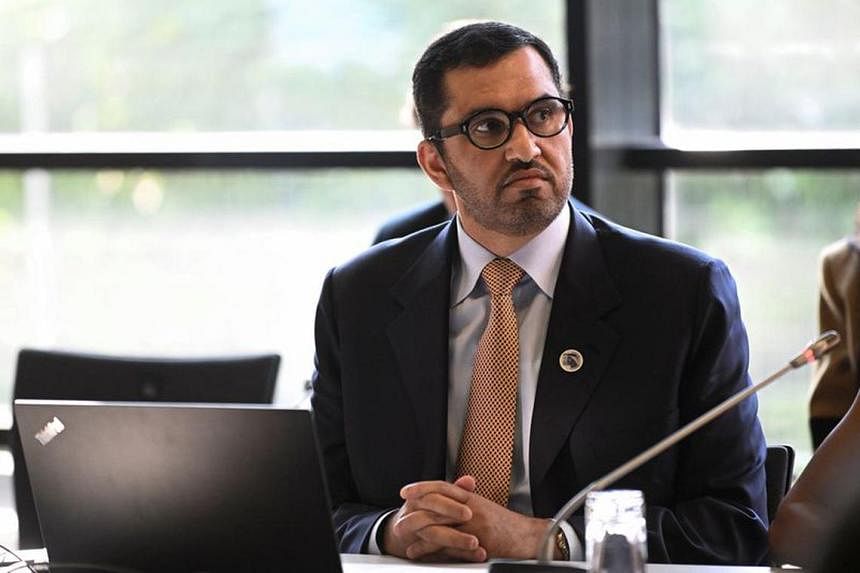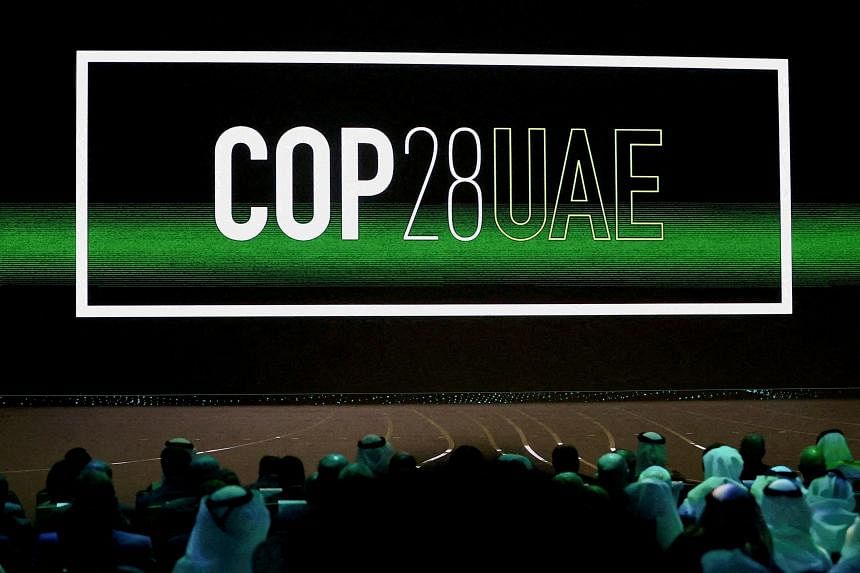SINGAPORE – Global leaders will be gathering in Dubai towards the end of 2023 to deliberate the earth’s future, from cutting greenhouse gas emissions to building the resilience to deal with climate extremes such as floods, droughts and rising sea levels.
Hosted by the United Arab Emirates, the United Nations-led talks will once again involve looking at ways to limit global warming to 1.5 deg C above pre-industrial levels, as stipulated by the landmark Paris Agreement signed in 2015.
COP28, or the 28th Conference of the Parties under the UN Framework Convention on Climate Change, will be held from Nov 30 to Dec 12.
A crucial part of the conference will be the Global Stocktake, where countries will be assessing the progress of their climate actions.
An earlier report published by the UN found that the rate of emissions reductions is not fast enough, and the review is supposed to get countries to speed things up and come up with more ambitious climate commitments by 2025.
However, these talks are notorious for running into overtime, especially if countries cannot come to a consensus on certain issues.
At COP27 in 2022, the talks overran by two days as countries tussled over a number of issues, such as the establishment of a loss and damage fund for developing countries grappling with climate-related disasters.
Why is this year’s COP28 so contentious?
The UAE has appointed Dr Sultan Al Jaber, who heads UAE’s state oil producer Abu Dhabi National Oil Company (Adnoc), as its president.
He also heads renewable energy company Masdar, which has invested billions of dollars in technologies like wind and solar power across 40 countries.

Dr Al Jaber’s job is to unite the participating countries and get them to reach a consensus on key climate issues.
Despite his involvement in the clean energy space, many have questioned his ability to remain impartial during negotiations, especially as Adnoc has in place oil and gas expansion plans over the next few years.
Who gets to attend the COP28 conference?
Aside from world leaders, the conference also involves environment ministers and negotiators who are usually civil servants, as well as members of civil society such as non-governmental organisations and businesses.
Representatives from companies often also attend the conference for their own business interests.
COP27 had nearly 50,000 people in attendance, many of whom were fossil fuel lobbyists and delegates from the private sector, causing fear that their presence would stymie negotiations in phasing down fossil fuels and keeping the 1.5 deg C target within reach.
COP28 in Dubai is expected to have 70,000 to 80,000 participants.
The UN has taken steps to ensure more transparency in 2023, such as publishing more details on its attendees and getting participants to give more details on who they work for.
Aside from the Global Stocktake, what else is on the agenda for COP28?
Mitigation
This is a key prong of climate action, where countries look to cut the amount of planet-warming greenhouse gases being released into the atmosphere.
The UAE has set a goal of fast-tracking the green energy transition and slashing global greenhouse gas emissions.
Key goals:
- Shift away from fossil fuels and triple annual renewable energy capacity by 2030.
- Operationalise carbon markets, such that countries can trade carbon credits with each other to meet their climate targets.
- Channel investments to support the green transition.
Singapore’s Minister for Sustainability and the Environment Grace Fu will be co-facilitating negotiations on mitigation with Norwegian Foreign Minister Espen Barth Eide, to ensure the mitigation outcome keeps the 1.5 deg C target within reach.
This is the third time both ministers are co-facilitating negotiations.
At COP26 and COP27, they co-facilitated issues relating to Article 6, or carbon markets.
Climate finance
Make climate finance more accessible to poorer nations. This refers to funding channelled from rich nations to poorer nations to help them to cut greenhouse gas emissions and adapt to climate change.
In particular, more finance is needed from government-backed development banks and from private investments.
Key goals:
- Reform financial structures to drive more private capital to developing countries for climate action.
- Rebuild trust by making good on old promises. Developed countries need to honour their pledge to deliver US$100 billion (S$135.5 billion) in climate finance each year by 2020. For the first time, developed countries said that they are on track to meet the target in 2023.
- Begin discussions on a new finance goal by COP29 that will supersede the existing US$100 billion target. An analysis by the UN in 2021 found that around US$5.8 trillion in financing will be needed by 2030, which is equivalent to US$600 billion a year. Another report in 2022 suggests up to US$1 trillion a year is needed by 2030.
Loss and damage
With the loss and damage fund established at COP27 in 2022, poorer nations that bear the brunt of climate impacts can, in theory, receive compensation from developed countries for the economic losses that they face.
Since then, a committee has been tasked to determine the structure of the fund, its beneficiaries and potential contributors.
The committee has just decided for the fund to be managed by the World Bank for an interim period of four years. Developing countries had earlier feared that this would make it difficult for them to access the funding needed.
Key goals:
- The committee should sort out these teething issues and deliver its full mandate.
- Countries should begin making early pledges to the loss and damage fund at COP28.
Adaptation
All nations face impacts from climate change and need to adapt to them.
COP28 places a greater focus on food, agriculture, health, water and nature, putting people at the centre of adaptation.
Key goals:
- Drive deeper collective action on adaptation finance, as current levels have been deemed to be far too little. New UN estimates show up to US$387 billion a year is needed for adaptation until 2030, from a current base of around US$21 billion a year. Likewise, of the US$100 billion target, 50 per cent needs to go to adaptation, but it is currently only at 20 per cent.
- Invest in practical solutions to improve lives and livelihoods, especially those on the front lines of conservation and adaptation efforts, including women and indigenous people.
Making COP28 ‘the most inclusive one ever’
Ensuring participation from youth, women and indigenous people is a key objective of COP28.
For example, the International Youth Climate Delegate Programme has been launched for 100 young people from developing countries, as well as from indigenous and climate-vulnerable countries, to take part in the COP negotiation process.
Sustainability consultant Athena Thomas, 25, the only Singaporean joining the programme, said she had wanted to do so to better understand the climate space and strengthen the impact of her work.
The programme has been focused on preparing youth to be involved in climate negotiations, and to share their views more effectively with policymakers, she added.
For example, some climate negotiation simulations have already taken place.
“I think it’s crucial for young people to be involved in the climate negotiation process, as they can bring new and under-represented perspectives to the table,” said Ms Thomas.


